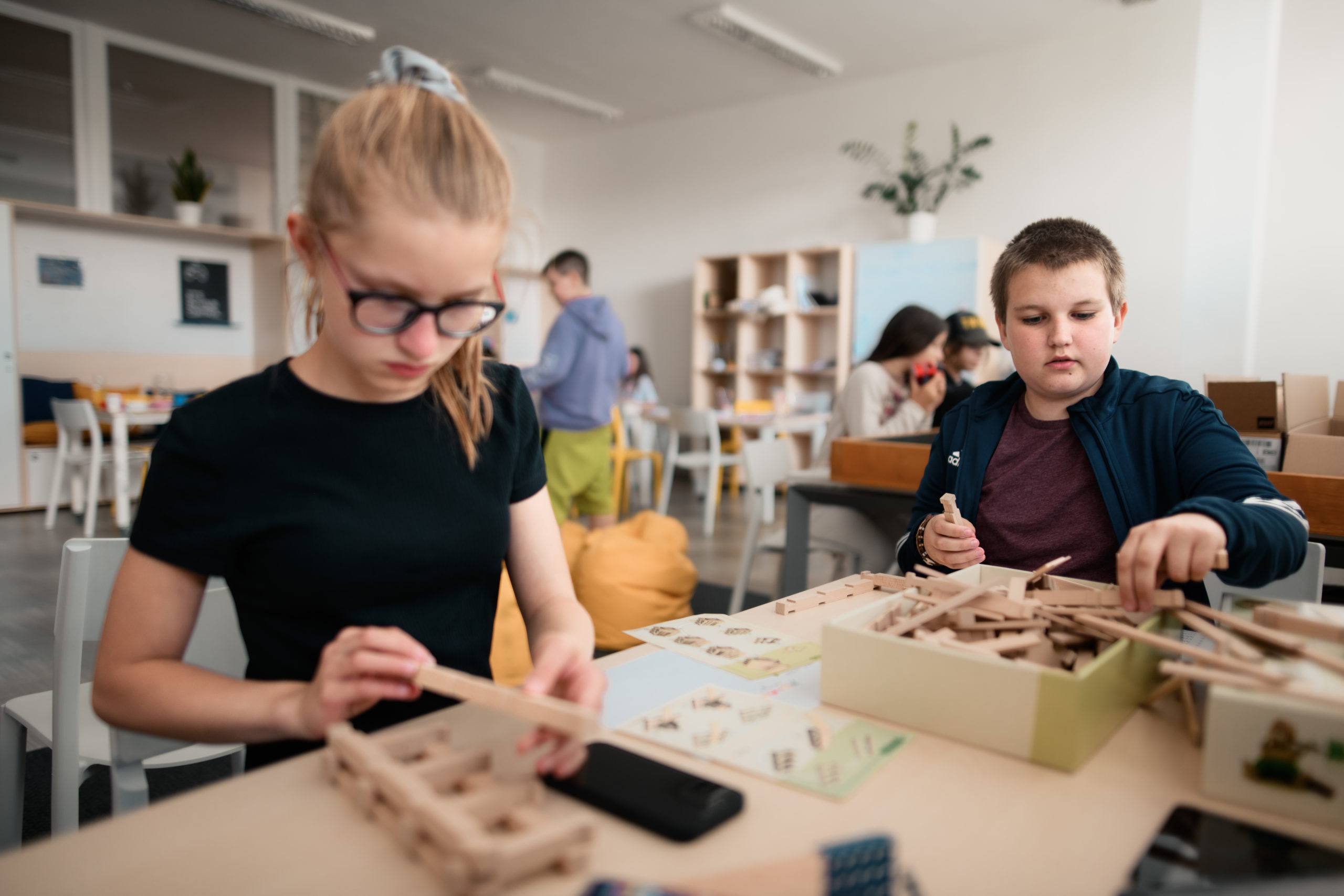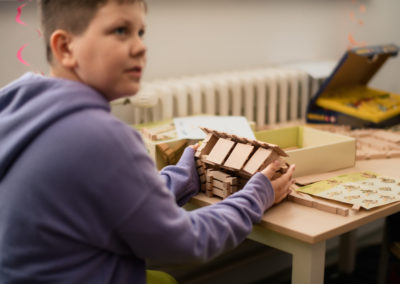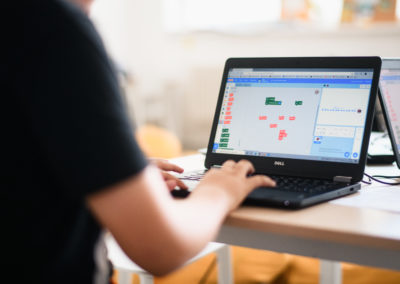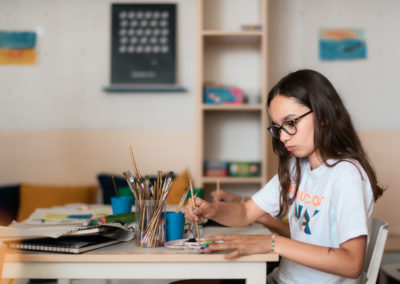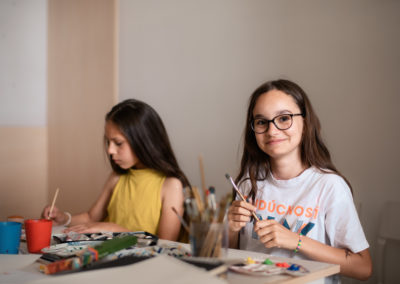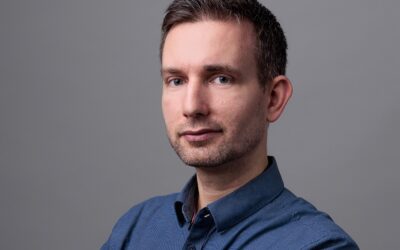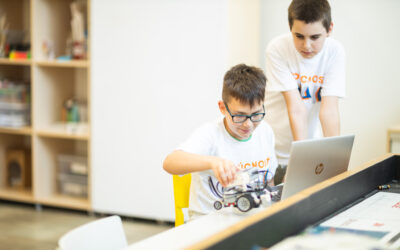At Open Future programme, we use makerspace workshops. They help children develop entrepreneurship
Imagine if you had a workshop at school, at home or in the club you attend, where you could tinker, improve your calligraphy, program, crochet and print on a 3D printer. Would it encourage you to create your own projects and take initiative? We believe that it would. That’s why we use Open Future programme makerspace workshops.
One of the basic characteristics that children can apply in whatever they do in the future is entrepreneurship. It will help them recognize opportunities, create new challenges and bring their own projects to life, for which they will take responsibility. In Open Future programme, we develop entrepreneurship in various ways. One is the so-called makerspace.
What is a makerspace?
Makerspace is a space where children have the opportunity to collaborate with each other, create, identify and solve problems. They can choose from countless tools (technical or creative, from wood chisels to 3D printing) and materials. They can simply use anything that helps them find solutions to new challenges. The important thing is that the makerspace allows children to pursue what they are interested in, children progress at their own speed and follow their own path. It should also be said that a makerspace is not necessarily just a space, but also a mindset.
What do children learn thanks to it?
Thanks to the makerspace, children develop both cognitive and socio-emotional skills. They develop their ability to find their own solutions and ways to approach new challenges.
“When working, children often encounter an error that prevents them from achieving the desired result. Subsequently, they learn to find another way to achieve the goal, improve it and correct their mistake. In this way, they gain persistence and the ability to continuously learn,” explains Open Future programme manager Alica Vidová.
Freedom of choice builds autonomy and the ability to self-regulate in them. “They also learn to plan their time for creation, they learn responsibility when using knives or burners, and at the same time, these experiences with creation lead them to frugality and ecology. They will find that waste is not acceptable, because there will not be enough material left for other products,” adds Alicia.
Why do we use workshops?
In Open Future, we devote a lot of time to the topic of entrepreneurship. Under the “roof” of entrepreneurship falls a whole list of skills, such as creativity, problem solving, innovativeness and learning from mistakes. “In the future, children will need to demonstrate these skills, and the makerspace gives them the space, time and freedom to acquire as much of it as possible. Therefore, in the first year of the programme, children create a lot, and this process, in which they gain experience through trial and error, helps them gain self-confidence. It also helps them to find qualities that they use in the second year of the program, when they are already working on their own project,” summed up the senior program manager of Open Future, Miriam Šelepová.
Thanks to their own real assignments and experiences, children get to know the business process and receive practical business education.
5 rules of makerspace operation
- Makerspace must be sustainable. We therefore recommend taking a look at the ten rules of ecological makerspace.
- We work in the makerspace separately. The key to success is self-education, which is important as a follow-up to work on their own project, which is one of the outputs of the children from our programme.
- We share experiences. Children share ideas and solutions with each other, with experts from practice and with program mentors.
- We adapt the makerspace to the region. We perceive the need to adapt the makerspace to topics that are dominant in the given region, or, on the contrary, are missing and necessary. For example, in Zvolen, the topic of forestry will dominate, i.e. work with wood, ecological projects and so..
- We pay attention to constant challenges. Children should also be invited to areas and topics that may be out of their comfort zone, but they need to see that it is possible and that they can do it.
I want a makerspace. What do I need to implement it?
„Our goal is to create a package of materials, forms, recommendations and know-how that would help schools set up and run their own makerspace,” says Open Future guarantor for the field of digital skills, Eva Klimeková. The expert is behind the creation of the makerspace concept in the programme and also behind the idea of its transferability to other schools. Therefore, let’s look at a few tips on what you need for your own makerspace.
We need: space, material and technique.
Space: for example, we will use a class that we will reorganize and divide a little. The important thing is that if we are going to create, we can mentally “pass” to the part of the class intended for creation. In the creation space then we label where everything is, we use various transparent boxes, binders or “files” with headings or a bulletin board.
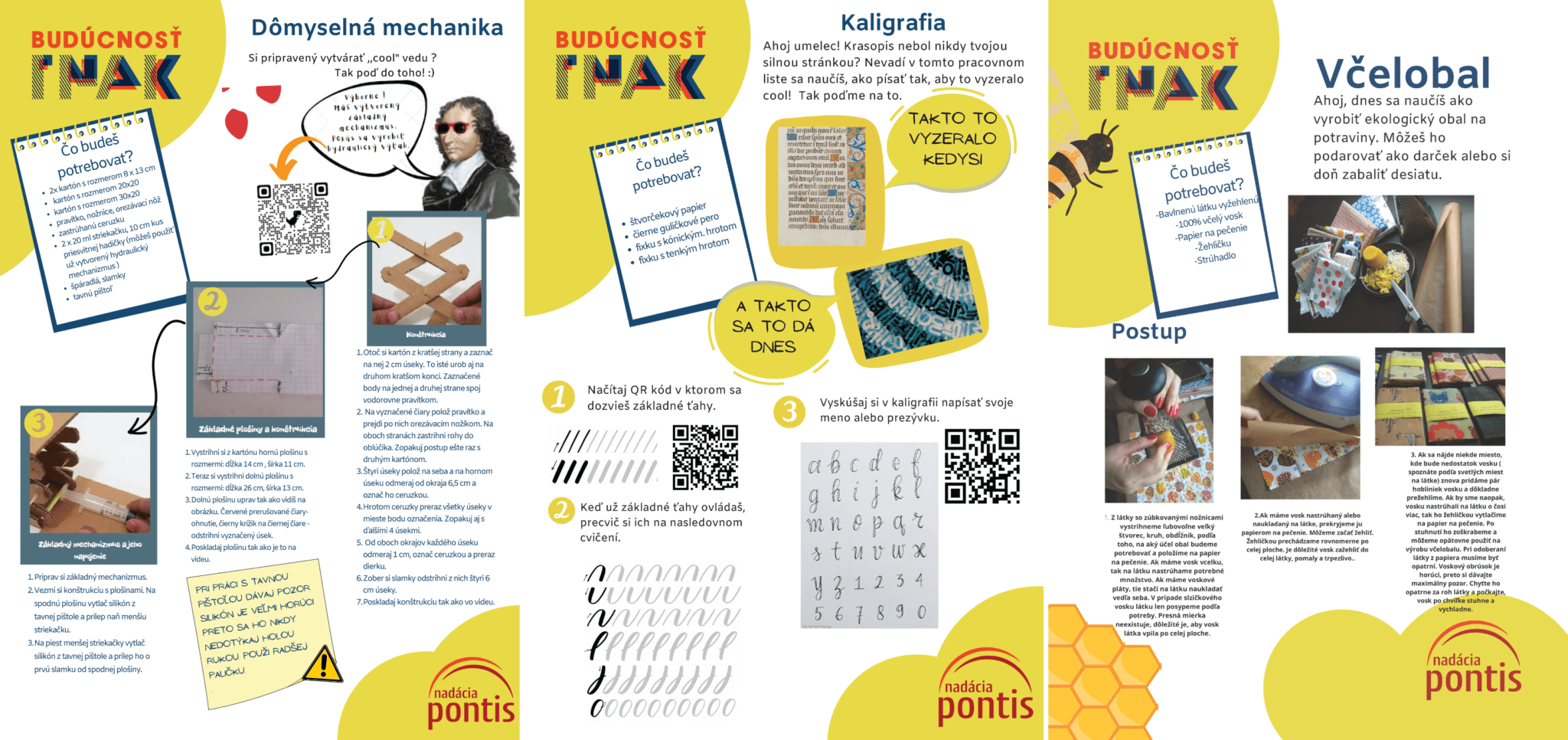
Examples of our makerspace creation processes.
Material and technique: it is ideal to start with material that is less technical, such as cardboard, legos, folding toys, screws and nuts, wires, tissues, twine, paper clips and the like. and also more demanding devices such as laptops, microbits, on which children learn to program, or 3D printing. With us, children have the opportunity to create soaps, candles, ceramics, program Lego robots, paint and much more. A great tutorial with specific items on how to get started and continue can be found here.
Other news
Psychologist Križo: You need to know how to take care of yourself. If the teacher is not cool, the children will detect it
Viktor Križo from Inklucentro considers informal education of children aged 11 to 15 very useful and beneficial....
One Million grant for Open Future programme: We will expand to six more Slovak cities
Thanks to a grant from the Danish Villum Foundation in the amount of 1.3 million euros, we can spread Open Future...
Children as social innovators – they identified problems in their surroundings and proposed their solutions
Open Future programme Expo event connected people from business and public administration with elementary school...
